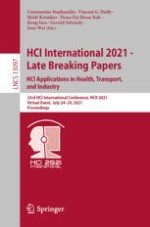2021 | OriginalPaper | Chapter
Hitting the Apex Highly Automated? – Influence of Trajectory Behaviour on Perceived Safety in Curves
Authors : Patrick Rossner, Marty Friedrich, Angelika C. Bullinger
Published in: HCI International 2021 - Late Breaking Papers: HCI Applications in Health, Transport, and Industry
Publisher: Springer International Publishing
Activate our intelligent search to find suitable subject content or patents.
Select sections of text to find matching patents with Artificial Intelligence. powered by
Select sections of text to find additional relevant content using AI-assisted search. powered by
